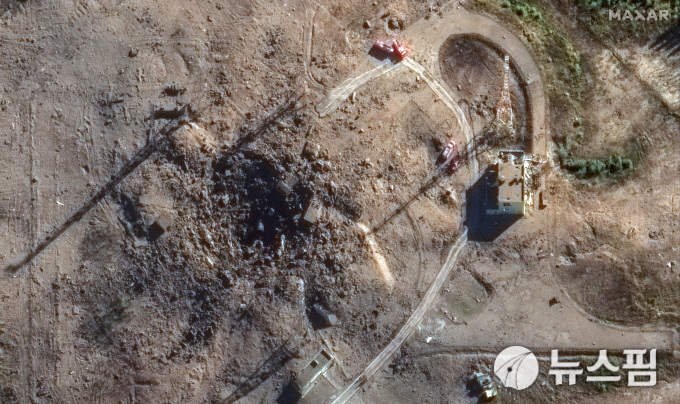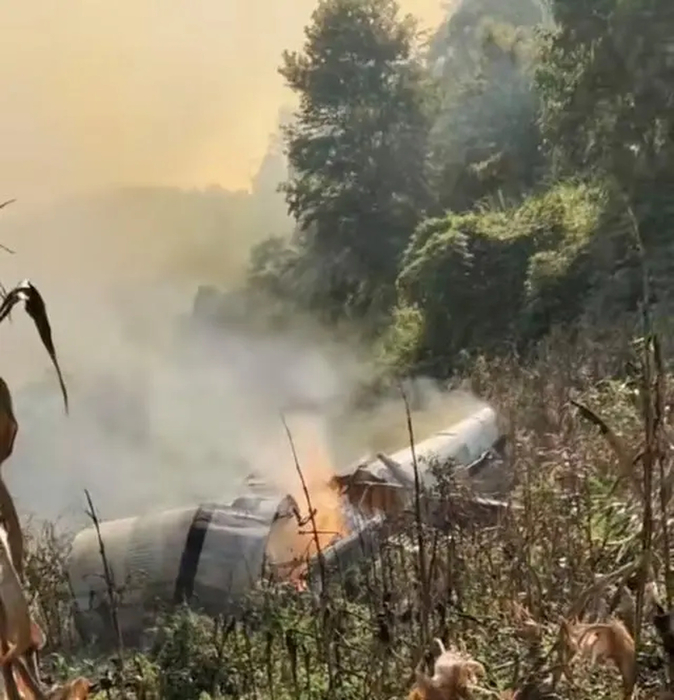
[브레이크뉴스=이성용 기자] 최형두 의원이 우주항공청에서 받은 자료에 따르면 한국이 올해 1만 3천여 건의(9월 기준) 위성 충돌경보를 통보받은 것으로 파악했다.
위성 10km 반경 내 우주쓰레기 진입 예상 시 美 우주군은 각 국가에 ‘위성 위험 경보’를 발령한다. 한국의 경우 하루에도 46번의 충돌위험 경보가 발령되는 것으로 2017년도에 비해 6배 늘어난 수치이다.
최 의원은 “우주 발사체 경쟁이 심화함에 따라 우주에서 벌어지는 재앙이 점차 현실로 다가오고 있다”며 “위험을 예측하고 대응할 수 있도록 관련 체계를 점검하겠다”고 말했다.
인류가 우주로 쏘아 올린 발사체들의 파편이 총알 10배 속도로 지구 궤도를 떠돌며 인류를 위협하고 있다. 특히 위성과의 충돌을 일으키는 우주쓰레기(로켓 잔해, 파편 등)와 지구로 낙하해 피해를 주는 인공우주물체가 주요 위험 대상이다. 우주쓰레기의 경우 mm 단위의 쓰레기가 총알 수준의 파괴력을 지니고, cm는 수류탄 폭발 강도, 10cm가 넘으면 인공위성 하나가 완파될 정도의 위력을 갖는다.
우주 발사체 경쟁이 심화되면서 우주쓰레기 문제가 커지고 있다. 최근 5년간 500개 이상의 우주쓰레기를 만든 사례를 살펴보면 ‘발사체 궤도권 폭발’과 국제적으로 금지된 ‘위성 요격시험’이 대표적이다. 2021년 11월, 러시아의 COSMOS 1408 인공위성 요격시험은 1,800여 개의 우주쓰레기를 만들었고, 중국판 스타링크 CZ-6A는 2022년 11월, 2024년 8월 상단 부분이 폭발하며 각각 800여 개의 우주쓰레기를 만들었다.
미국 국립연구회에 따르면 우주쓰레기 양은 임계점을 돌파했고 거대 파편들이 서로 충돌하며 그 양이 더욱 늘어날 것으로 예상한다. 현재까지 파악된 것만 1억 3,000만여 개의 우주쓰레기가 존재하며 저궤도에선 위성과 우주 파편, 로켓 잔해가 뒤섞여 지구를 떠돌고 있다. 이를 해결하기 위한 각국의 시도도 이어지고 있다.
미국과 중국, 러시아 등은 우주쓰레기를 포집하는 기술을 개발했으며 궤도권 위성 분쟁에도 사용하고 있는 것으로 파악된다. 하지만 한국의 경우 관련 스타트업이 단 2곳에 불과하며 기술력 또한 다른 국가에 비해 5년 이상 뒤처진 것으로 파악됐다.
우주에서 지구로 떨어지는 인공우주물체의 연도별 추락 현황에 따르면 2022년 지구로 추락한 인공우주물체는 2천 5백여 건에 달하며, 5년 전과 비교하면 10배 가까이 증가했으며, 17년부터 21년 추락 횟수를 모두 합친 것보다 많은 횟수다.
과학기술정보통신부는 2023년, NASA 지구관측 위성 잔해물의 한반도 추락 위험 이후 우주위험 대응 매뉴얼 개정에 착수했다. “매뉴얼이 현실을 반영하지 못하는 부분이 있어서 체계적으로 개정하기로 했다”고 설명했다.
그러나 우주 위험 예측 관련 사업은 난항을 겪고 있다. 우주 위험 대응 실무를 담당하는 한국천문연구원은 우주 위험 대비 레이더 개발 사업 등을 추진하고 있으나, 다부처 협의 과정이 늦어지는 등을 이유로 예비타당성 조사를 통과하지 못해 시급한 위기 대응에 차질을 빚고 있다.
우주 위험 대비 레이더가 없으면 사실상 형식적인 업무에 그치고 美 우주군에서 보내주는 자료도 제한적인 만큼 서둘러 독자적 우주 레이더 감시체제를 갖춰야 한다고 말했다.
민간 주도 발사체가 급속도로 늘어나며 발사체 발사 횟수가 10년 전보다 10배 이상 많아진 만큼 위험부담도 증가할 것으로 예상된다. 그런 만큼 관련 대책 마련이 시급하다.
최형두 의원은 “우주 경쟁의 후발주자인 우리나라가 우주 강국의 쓰레기 위협으로부터 국민을 보호해야 할 의무가 있으나 우주항공의 범위가 넓어 놓치는 부분이 있을 수 있다”며 “대한민국의 우주경쟁력 강화를 위해 국회 차원의 뒷받침을 강화하겠다”고 말했다.
*아래는 위 기사를 '구글 번역'으로 번역한 영문 기사의 [전문]입니다. '구글번역'은 이해도 높이기를 위해 노력하고 있습니다. 영문 번역에 오류가 있을 수 있음을 전제로 합니다.
*Below is the [full text] of the English article translated using ‘Google Translate’.‘Google Translate’ is working to increase understanding.It is assumed that there may be errors in the English translation.
Rep. Choi Hyung-doo: "Space debris problem is growing"
Strengthening support at the National Assembly level
According to data received by Rep. Choi Hyung-doo from the Korea Aerospace Research Institute, Korea received approximately 13,000 satellite collision warnings this year (as of September).
When space debris is expected to enter within a 10km radius of a satellite, the U.S. Space Force issues a "satellite danger warning" to each country. In Korea's case, 46 collision danger warnings are issued per day, a six-fold increase from 2017.
Rep. Choi said, "As competition for space launch vehicles intensifies, disasters in space are gradually becoming a reality," and added, "We will review the relevant systems so that we can predict and respond to risks."
Debris from launch vehicles launched into space by humans is threatening humanity by drifting through Earth's orbit at 10 times the speed of a bullet. In particular, space debris (rocket debris, fragments, etc.) that cause collisions with satellites and artificial space objects that fall to Earth and cause damage are the main hazards. In the case of space debris, debris in the mm unit has the same destructive power as a bullet, cm has the same power as a grenade explosion, and if it is over 10 cm, it has the power to completely destroy a satellite.
As competition for space launch vehicles intensifies, the problem of space debris is growing. Looking at the cases of more than 500 pieces of space debris created in the past five years, the representative examples are ‘launch vehicle orbital explosions’ and ‘satellite interception tests’ that are banned internationally. In November 2021, Russia’s COSMOS 1408 satellite interception test created about 1,800 pieces of space debris, and the Chinese version of Starlink CZ-6A created about 800 pieces of space debris each when the upper part exploded in November 2022 and August 2024.
According to the U.S. National Research Council, the amount of space debris has surpassed the critical point and is expected to increase further as large pieces of debris collide with each other. As of now, there are approximately 130 million pieces of space debris, and satellites, space debris, and rocket debris are floating around the Earth in low orbit. Efforts are being made by each country to resolve this.
The U.S., China, Russia, etc. have developed technology to collect space debris and are known to be using it in disputes over satellites in orbit. However, in Korea, there are only two related startups, and its technology is also known to lag behind other countries by more than five years.
According to the annual status of artificial space objects falling from space to Earth, the number of artificial space objects that fell to Earth in 2022 reached approximately 2,500, which is nearly a tenfold increase compared to five years ago and is more than the total number of crashes from 2017 to 2021 combined.
The Ministry of Science and ICT has begun revising the space hazard response manual in 2023 after the risk of NASA Earth observation satellite debris crashing into the Korean Peninsula. It explained, “We decided to systematically revise the manual because there were some parts that did not reflect reality.”
However, space hazard prediction-related projects are facing difficulties. The Korea Astronomy and Space Science Institute, which is in charge of space hazard response practices, is promoting projects such as the development of space hazard radar, but is experiencing difficulties in responding to urgent crises as it has not passed the preliminary feasibility study due to delays in the multi-ministerial consultation process.
He said that without space hazard radar, it would be a formality in reality and that the data sent by the U.S. Space Force is limited, so we need to quickly establish an independent space radar surveillance system.
With the rapid increase in private-led launch vehicles and the number of launch vehicles launched more than 10 times higher than 10 years ago, the risk burden is expected to increase. Therefore, it is urgent to prepare related measures.
Rep. Choi Hyung-doo said, “As a latecomer in the space race, our country has a duty to protect its citizens from the threats of debris from space powers. However, given the broad scope of aerospace, there may be areas that we are missing out on,” and added, “I will strengthen support at the National Assembly level to enhance South Korea’s space competitiveness.”


![[보안칼럼]IT 대란을 통해 본 공급망 공격을 대하는 자세](https://img.etnews.com/news/article/2024/09/21/news-p.v1.20240921.512677232a7f4ee0ba81462b9556e39c_P1.jpg)



![[국민을 위한 국민의 기업] 일산화탄소 중독 사고 예방에 집중 … 캠핑장 연계 홍보, 불법제품 단속 강화](https://pds.joongang.co.kr/news/component/htmlphoto_mmdata/202409/25/4762a46f-b1e2-4797-ba97-c28b812f2670.jpg)